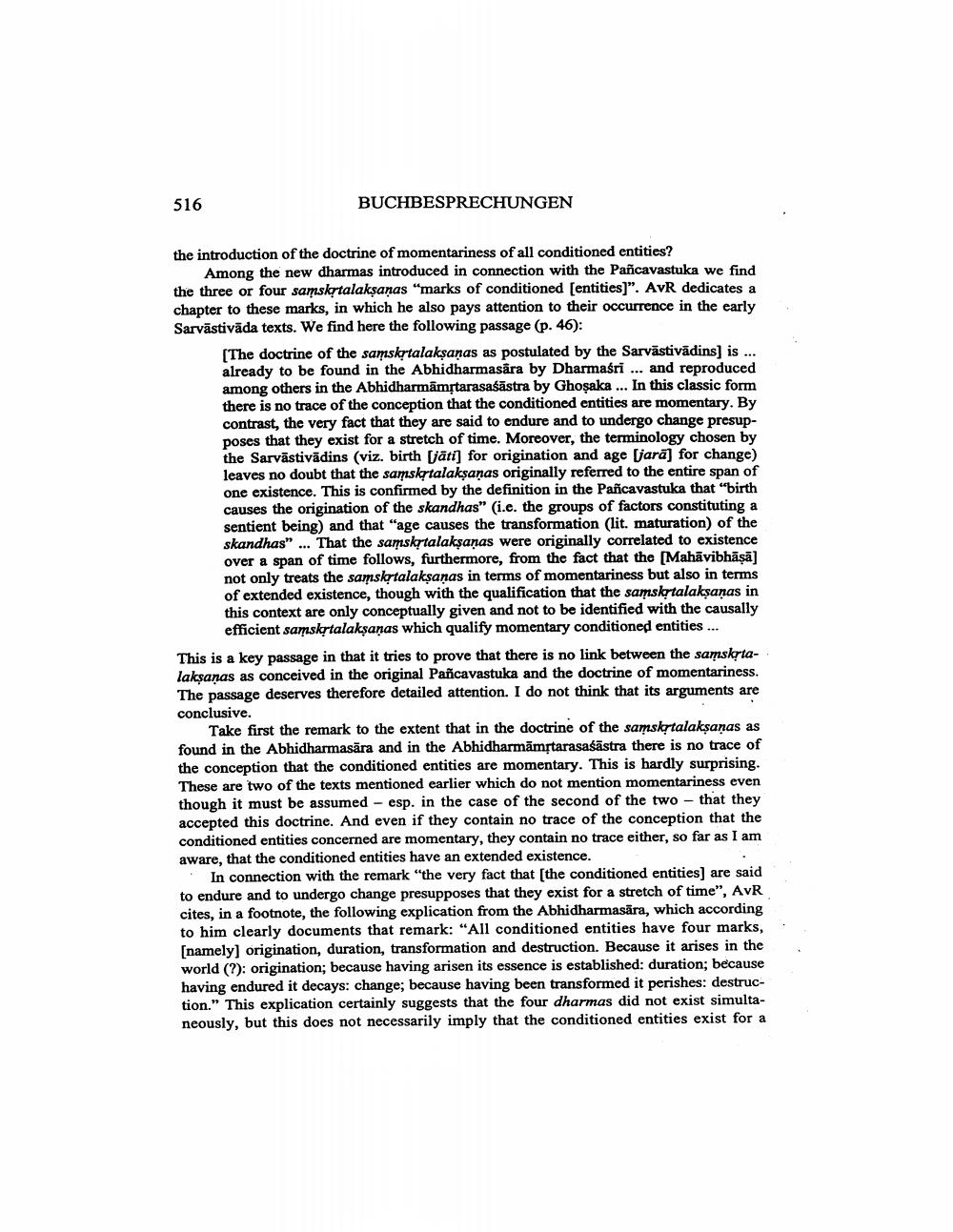Book Title: Buchbesprechungen Comptes Rendus Book Reviews Author(s): Peter Schreiner Publisher: Peter Schreiner View full book textPage 4
________________ 516 BUCHBESPRECHUNGEN the introduction of the doctrine of momentariness of all conditioned entities? Among the new dharmas introduced in connection with the Pancavastuka we find the three or four samskytalaksaņas "marks of conditioned [entities]". AvR dedicates a chapter to these marks, in which he also pays attention to their occurrence in the early Sarvästivāda texts. We find here the following passage (p. 46): [The doctrine of the samskstalakṣaṇas as postulated by the Sarvästivādins) is ... already to be found in the Abhidharmasära by Dharmasri ... and reproduced among others in the Abhidharmāmstarasaśāstra by Ghosaka ... In this classic form there is no trace of the conception that the conditioned entities are momentary. By contrast, the very fact that they are said to endure and to undergo change presupposes that they exist for a stretch of time. Moreover, the terminology chosen by the Sarvāstivādins (viz. birth (jāti] for origination and age (jara] for change) leaves no doubt that the samsktalaksanas originally referred to the entire span of one existence. This is confirmed by the definition in the Pancavastuka that "birth causes the origination of the skandhas" (i.e. the groups of factors constituting a sentient being) and that "age causes the transformation (lit. maturation of the skandhas" ... That the samskytalakşaņas were originally correlated to existence over a span of time follows, furthermore, from the fact that the Mahāvibhāṣā] not only treats the samskrtalaksaņas in terms of momentariness but also in terms of extended existence, though with the qualification that the samsktalaksanas in this context are only conceptually given and not to be identified with the causally efficient samskytalaksanas which qualify momentary conditioned entities ... This is a key passage in that it tries to prove that there is no link between the samskrtalaksanas as conceived in the original Pañcavastuka and the doctrine of momentariness. The passage deserves therefore detailed attention. I do not think that its arguments are conclusive. Take first the remark to the extent that in the doctrine of the samskiptalaksanas as found in the Abhidharmasāra and in the Abhidharmāmstarasaśāstra there is no trace of the conception that the conditioned entities are momentary. This is hardly surprising. These are two of the texts mentioned earlier which do not mention momentariness even though it must be assumed - esp. in the case of the second of the two - that they accepted this doctrine. And even if they contain no trace of the conception that the conditioned entities concerned are momentary, they contain no trace either, so far as I am aware, that the conditioned entities have an extended existence. In connection with the remark "the very fact that the conditioned entities) are said to endure and to undergo change presupposes that they exist for a stretch of time”, AvR cites, in a footnote, the following explication from the Abhidharmasāra, which according to him clearly documents that remark: "All conditioned entities have four marks, [namely] origination, duration, transformation and destruction. Because it arises in the world (?): origination; because having arisen its essence is established: duration; because having endured it decays: change; because having been transformed it perishes: destruction." This explication certainly suggests that the four dharmas did not exist simultaneously, but this does not necessarily imply that the conditioned entities exist for aPage Navigation
1 2 3 4 5 6 7 8
